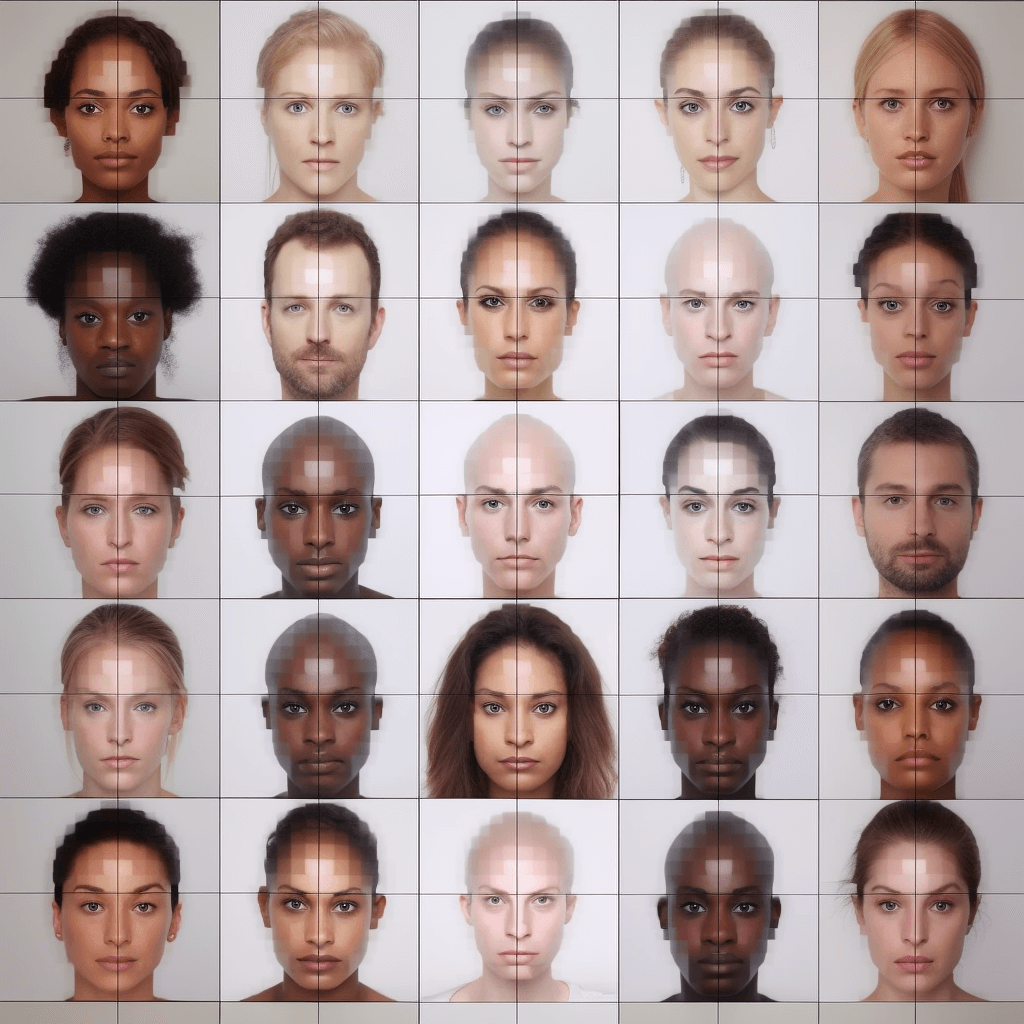In today’s digital age, technology plays a crucial role in various aspects of our lives, including healthcare and wellness. One fascinating application of technology is facial scanning, which can determine important health metrics. However, the accuracy of these measurements can be influenced by factors such as skin colour bias and the challenges of managing different skin tones. In this article, we will delve into the concept of skin colour bias, explore the Fitzpatrick scale, and discuss how Vastmindz algorithms excel at managing different skin tones when performing a facial scan to determine health metrics. Additionally, we will touch on the innovative PPG and RPPG technology utilized in this process.
The Fitzpatrick Scale: A Tool for Categorizing Skin Tone
1. Understanding Skin Colour Bias
Skin colour bias refers to the tendency of certain algorithms, technologies, or systems to perform differently based on an individual’s skin tone. It can arise due to various factors, including inadequate representation of diverse skin tones during algorithm development or biased data used for training. Skin colour bias can lead to inaccurate results or discrepancies in measurements, especially when it comes to facial scanning for health metrics.
2. The Fitzpatrick Scale: A Tool for Categorizing Skin Tones
The Fitzpatrick scale is a widely recognized classification system used to categorize human skin tones. It was developed by Harvard dermatologist Thomas Fitzpatrick in 1975. The scale divides skin tones into six broad categories based on factors such as skin colour, sensitivity to sunlight, and tendency to tan or burn. These categories range from Type I (very fair skin) to Type VI (deeply pigmented dark skin).
The Fitzpatrick scale provides a standardized reference point for assessing skin colour and enables healthcare professionals and technology developers to better understand and cater to the specific needs of individuals with different skin tones.
3. Challenges of Managing Different Skin Tones in Facial Scanning
Facial scanning for health metrics involves capturing and analyzing data from a person’s face to assess various health parameters. However, managing different skin tones poses significant challenges due to the variations in pigmentation and light absorption properties across diverse skin types. Algorithms that are not adequately trained on a diverse range of skin tones may produce biased or inaccurate results, leading to disparities in health assessments.
4. Vastmindz Algorithms: Overcoming Skin Colour Bias
Vastmindz, a leading technology company in the field of facial scanning, has developed advanced algorithms that excel at managing different skin tones. By leveraging extensive datasets that encompass a diverse range of skin tones, Vastmindz algorithms have minimized the impact of skin colour bias. These algorithms are designed to analyze facial features while accounting for the unique characteristics of each skin tone category on the Fitzpatrick scale.
Through meticulous training and testing, Vastmindz algorithms have demonstrated remarkable accuracy in assessing health metrics across individuals with different skin tones, thereby reducing disparities and ensuring equitable healthcare outcomes.
5. The Role of PPG and RPPG Technology
To further enhance the accuracy of health metric assessments, Vastmindz incorporates innovative PPG (Photoplethysmography) and RPPG (Remote Photoplethysmography) technology into their facial scanning process. PPG involves the use of light sensors to measure changes in blood volume in the microvasculature beneath the skin’s surface. By capturing these subtle variations, PPG technology provides valuable insights into blood flow, heart rate, and other vital health indicators.
RPPG technology takes PPG a step further by enabling non-contact measurement of these physiological signals. It utilizes specialized cameras that can detect minute changes in skin colour caused by blood flow variations. By leveraging PPG and RPPG technology, Vastmindz algorithms can derive accurate health metrics across different skin tones without the need for invasive procedures or physical contact.
Conclusion
In conclusion, skin colour bias poses a significant challenge in facial scanning for health metrics. However, with the advent of advanced algorithms developed by companies like Vastmindz, the accuracy and inclusivity of these assessments have improved significantly. By recognizing the importance of the Fitzpatrick scale, Vastmindz algorithms excel at managing different skin tones, ensuring accurate health metric assessments for individuals across the spectrum of skin colours. Moreover, the integration of PPG and RPPG technology enhances the precision and non-invasiveness of these assessments, making them more accessible and reliable.
Frequently Asked Questions (FAQs)
Q: Can skin colour bias affect the accuracy of facial scan results?
A: Yes, skin colour bias can influence the accuracy of facial scan results, leading to disparities in health assessments.
Q: What is the Fitzpatrick scale?
A: The Fitzpatrick scale is a classification system that categorizes skin tones into six broad categories, enabling better understanding and management of diverse skin types.
Q: How do Vastmindz algorithms overcome skin colour bias?
A: Vastmindz algorithms overcome skin colour bias by extensively training on diverse datasets and accounting for the unique characteristics of each skin tone category.
Q: What is the role of PPG and RPPG technology in facial scanning?
A: PPG and RPPG technology enable non-invasive measurement of physiological signals, enhancing the accuracy and accessibility of health metric assessments.
Q: How does Vastmindz ensure equitable healthcare outcomes?
A: Vastmindz ensures equitable healthcare outcomes by minimizing skin colour bias and providing accurate health metric assessments for individuals with different skin tones.

Author:
Nikhil Sehgal
Improving health & wellbeing with AI | Founder/CEO @ Vastmindz | Forbes 30 Under 30


